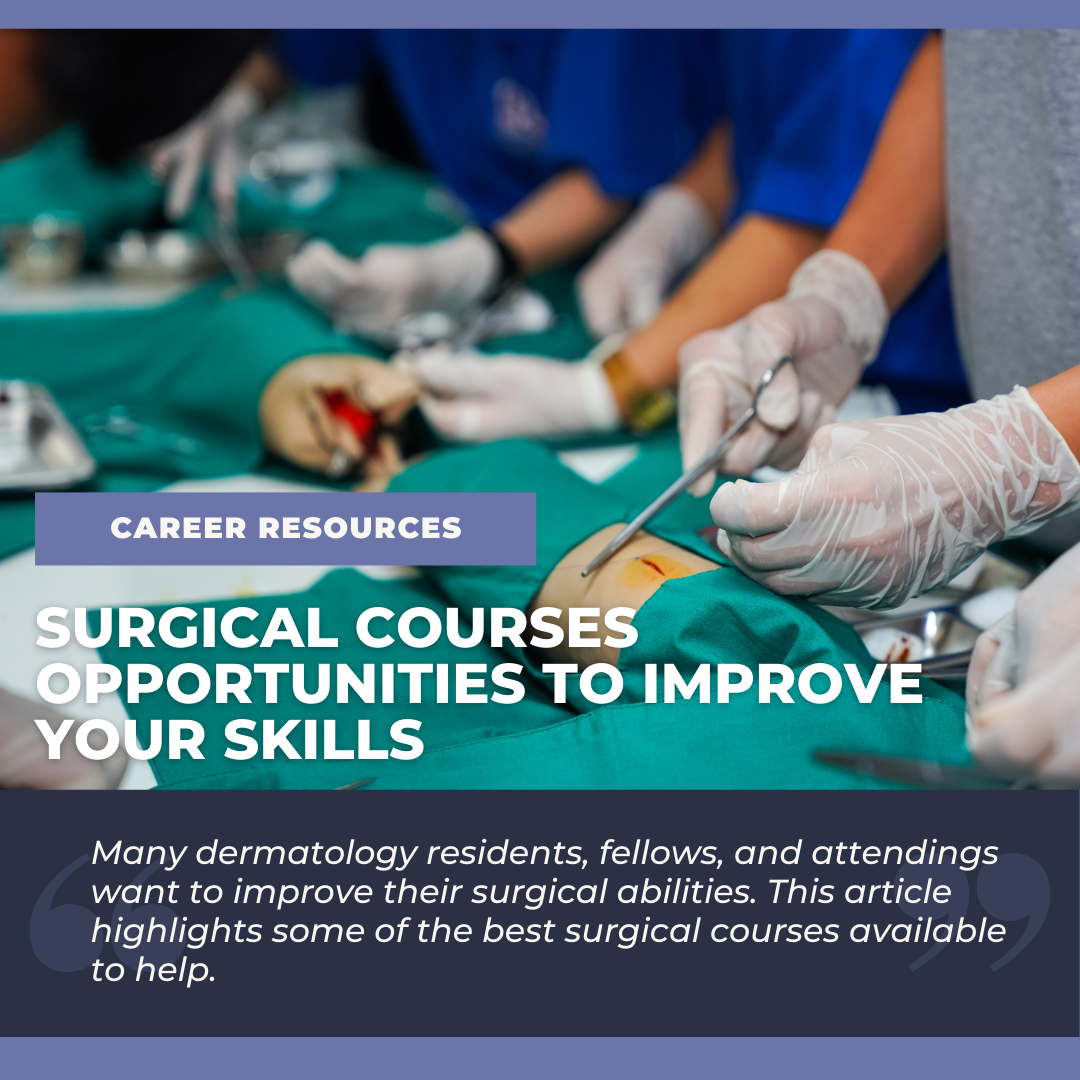Surgical exposure varies tremendously between residency programs. For those interested in a career in Mohs surgery, additional training in more complex techniques can be helpful before you start (or even during) your fellowship. Even for residents interested in general or pediatric dermatology, having expert guidance on surgical fundamentals can help ensure you are comfortable after you finish training.
There are several courses that are offered on an annual basis that are meant to improve dermatologists’ surgical abilities. While these are not geared specifically towards residents, they often give discounts for trainees who wish to attend.
-
- AAD and ASDS Fundamental courses – Hands on courses on the fundamentals of suturing and basic excisions can be found at both conferences annually. Usually these are half day courses and led by prominent dermatologic surgeons in the field. While geared towards general dermatologists and trainees, they can be beneficial for all surgical skill levels.
-
- Scripps/UC Davis Superficial Anatomy and Cutaneous Surgery Course – Held annually in San Diego, this is a joint Scripps Clinic and UC Davis 5-day intensive surgical course. A significant amount of time is spent in the cadaver lab with hands-on guidance on nearly all surgical reconstruction. There is also a robust lecture series led by dozens of well-known dermatologic surgeons.
-
- ASDS Advanced Surgical Flap reconstruction – A hands on course at the annual ASDS meeting covers more advanced surgical techniques using a combination of expert demonstration and hands-on cadaver training. Mostly guided towards interpolation flaps and larger reconstruction – this is a great half day course for those interested in a career in Mohs Surgery (or already practicing Mohs surgeons).
-
- SLU Advanced Flaps and Aesthetic Facial Reconstruction – An intensive 3-day course focused on flap reconstruction techniques. This also utilizes a lecture and cadaver-based design and allows for plenty of hands-on training. Unlike the ASDS course, this covers nearly all flap fundamentals over its longer weekend format.
-
- Nail Biopsy Courses – This is also an area with highly variable residency training. The AAD and ASDS often have hands-on nail procedure workshops. You can also look to the Council for nail disorders for their annual meeting and educational material.
While the emphasis on these courses was the hands-on component – there are many virtual opportunities to improve your surgical abilities as well. Many of these same organizations have built electronic platforms of videos and images to help guide dermatologists performing surgical procedures.
And don’t forget the power of observation: Asking dermatologic and plastic surgeons in your community to shadow can make a huge difference in how you operate. Everyone operates slightly differently, so investing the time now can help you figure out what works best for you.
Did you enjoy this article? Find more on Career Development here.

